
Jupiterimages/Photos.com/Getty Images
It happens every winter: After salt trucks dump buckets of granulated chemicals onto the streets and sidewalks, the snow-melting compound coats your finest footwear and leaves unsightly stains. While salt chemicals do a number on the snow and ice and make it safer to get around, this isn't safer for your shoes -- if you don't take care of them, they'll be ruined by spring. Fortunately, you can take a few simple steps to make them last longer.
Caring for Leather
Leather shoes are some of the most easily ruined by salt, because they're full of absorbent pores that the salt burns right through. Minimize the damage by cleaning off the salt as soon as you can, such as when you get inside after walking along a snowy, salty sidewalk. Cleaning off the white salt marks may be as easy as wiping the shoes down with a cotton washcloth dipped in warm water -- make sure it's damp, not saturated, because too much water isn't good for leather either. If that doesn't do the trick, mix a 50:50 solution of water and white vinegar, and use it to wipe away the salt. Give the shoes another wipe with warm water to clear away the solution.
Suede Strategy
Puffy suede boots are here to stay, but prolonged exposure to salty environments leaves them with caked-on layers of stains. As with leather shoes, the best strategy is to remove visible marks as early as possible, but with suede, you have to buff them out. Use a soft, kneadable eraser from the art supply store to rub away at any visible salt marks on your suede footwear. If you don't have one, or if you're working with a stubborn stain, buff it out with an emery board. To fluff the suede back up when you're done, use a bit of steam and a few swipes with a toothbrush to remove any mats.
Store-Bought Solutions
If home remedies don't work, that doesn't necessarily mean your shoes are ruined forever. Salty shoes are an epidemic every winter, so there are a wide variety of store-bought solutions for cleaning up salt stains. For example, if you have suede boots, apply a spray-on winterizer that repels chemicals and water. Leather shoes can be protected with wax and reconditioned with cream. Of course, you can always take your shoes to a leather and boot cleaner -- many offer services that rid your shoes of salt stains, so don't assume the shoes are ruined just because you can't get the stains out.
What to Avoid
When you take matters into your own hands, there are a few things you should avoid. For example, wiping down suede boots with warm water like you would with leather is a quick way to ruin their fluffy appearance and leave smooth mats behind. If you try to polish or seal your leather shoes after a cleaning, stay away from liquid polish, which soaks into the material's pores and dries it out. Tempting as it may be to accelerate the drying-off process by leaving your moistened leather shoes by the radiator, be patient and let them air dry naturally -- the heat can dry them out, cracking and ruining them. If your leather shoes get wet, either from the snow or from wiping them down, stuff them with newspaper so they retain their shape and let them dry at room temperature, away from any heat sources.
Related Articles

How to Remove Salt Stains From Boots
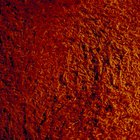
How to Clean Salt Stains From Suede

Homemade Sneaker Cleaner

What Happens to Suede Shoes When They ...
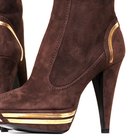
How to Clean Scuff Marks Off of Tan ...
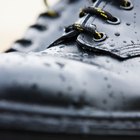
How to Get the White Out of Leather ...
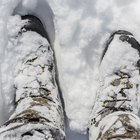
How to Clean Nylon Totes Boots

How to Get Scuffs Off Vinyl Shoes
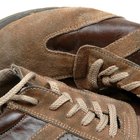
How to Clean Sperry Shoes With a Stain

How to Clean Rock Salt Stains From Pants

How to Clean Diesel Shoes

How to Clean Suede Boots at Home
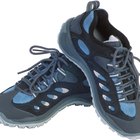
How to Air Out Shoes
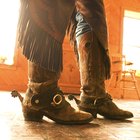
The Right Way to Soften a Pair of ...
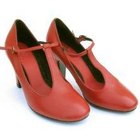
How to Clean Smelly Dress Shoes

How to Clean Airwalk Ugg-Style Boots
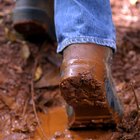
How to Clean Discolored Shoes

It Hurts Inside of My Shoes: How Can I ...

How to Get My Boots to Stop Squeaking

How to Deodorize Suede Sandal Footbeds
References
Writer Bio
Tom Ryan is a freelance writer, editor and English tutor. He graduated from the University of Pittsburgh with a degree in English writing, and has also worked as an arts and entertainment reporter with "The Pitt News" and a public relations and advertising copywriter with the Carnegie Library of Pittsburgh.
Photo Credits
Jupiterimages/Photos.com/Getty Images